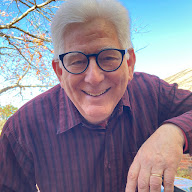Power of Words and Stories to Create the Life of the Mind
Course Description: Children learn their native language without formal lessons or teachers. This amazing power of acquisition is still available to you, the young adult learner. In fact, how you learn words and stories creates an interior life, the life of the mind that informs and directs the way you live your life. Socrates said, “The unexamined life is not worth living.” Aristotle countered, “The unintentional life is not worth examining.”SyllabusPowerWordsStoriesSpring2023.docx
Peer Mentor: Mwajuma Katembo
Course Goal: The work of first year college students is to master certain ways of learning and knowing, academic stuff, and becoming self-aware of their own learning processes could help them succeed in cultivating their own life of the mind.Signature Courses must meet the following Core Curriculum Student Learning Outcomes:
- In written, oral, and/or visual communication, students will communicate in a manner appropriate to audience and occasion, with an evident message and organizational structure.
- Students will be able to analyze, evaluate, or solve problems when given a set of circumstances, data, texts, or art.
- Students will demonstrate an understanding of societal and/or civic issues.
The successful learner will be an active and engaged participant in discussion forums by analyzing, constructing/creating, and evaluating information presented within the texts, external readings/resources, student research, and class activities.
One (1) Textbook Required –
Brown, B. (2021) Atlas of the heart: Mapping meaningful connections and the language of human experience. Random House.
Required Readings, as provided by the professor. For example:
Coneway, B, & Fredman, T. (2019). Bridging the gap in early literacy development. Early Years 40(2) pp. 25-29.
=====
Literature Circle Book Club (Required: choose one): https://tamuc.alma.exlibrisgroup.com/leganto/public/01TEXAM_COM/lists/4527129750006041?auth=CAS
There are many ways to run a lit circle/book club. The objective is to survey a lot of books <widely> and read and discuss one book <deeply>. How you and your lit circle/book club conduct your study is up to you. Maybe you want a structured, scheduled discussion plan. Or perhaps you want to all do your own reading and then come together to mash up your final thoughts. What if together you planned a creative, engaging response to your book that summarize and also invited/encouraged others to come on over to read your book, too? We are here for you.
Golinkoff, R.M., & Hirsh-Pasek, K. (1999). How babies talk: The magic and mystery of language in the first three years of life. Dutton.Mooney, C.G. (2018). Choose your words: Communicating with young children. Redleaf Press.
Nemeth, K.N. (2012). Many languages, building connections: Supporting infants and toddlers who are dual language learners. Gryphon House.
Resnick, M. (2017). Lifelong kindergarten: Cultivating creativity through projects, passion, peers, and play. MIT Press.
https://tamuc.alma.exlibrisgroup.com/leganto/public/01TEXAM_COM/lists/4527129750006041?auth=CAS
Some of these resources are available for one user at a time. Please be sure to log out and close your browser to make it available for the next student.
=====Assessments
1. Readings, Discussions, Quizzes, & Participation (whole class, small group, & Literature Circle Book Club)
2. Unit 2 includes Tools for observing, listening, documenting, and analyzing language production. Demonstrate familiarity with all the tools, and competence in one or more.
3. Unit 3 outlines outcomes for a Child Language Study. Demonstrate competence in analyzing original language artifacts for communicative competence.
4. Annotate 50 children’s books, categorized by genres
5. Participate in Literature Circle Book Club
6. Final Summative Reflection
7. Create, make, do, craft, compose, choreograph, write, sing, sculpt, paint an original project based on your analysis of language acquisition.
=====
Presentation by Dr. Josh Thompson at Annual Professional Learning Institute of National Association for the Education of Young Children, June 2020.
Children learn their native language without formal lessons or teachers. This amazing power of acquisition is still available to us as adult learners. In fact, how we learn words and stories creates an interior life, the life of the mind, that informs and directs the way you live your life.
The National Association for the Education of Young Children www.NAEYC.org hosts two annual meetings, the Annual Conference and the Professional Learning Institute (PLI). The PLI for 2020 was scheduled for New Orleans in June, but because of COVID-19 it was cancelled. In April, I received notice regarding my presentation proposal:
"As in past years, we went through a highly competitive, peer-reviewed selection process to identify proposals for sessions that would be engaging and relevant to our audience. And although we are not moving forward with the event as planned, your proposal would have been selected for the 2020 Institute program."
In May, I was notified that my presentation had been selected to be recorded and offered in NAEYC's Virtual Institute HTTPS://www.naeyc.org/virtual-institute. On May 11, I recorded my 45 min presentation, "Power of Words and Stories to Create the Life of the Mind."
Handout
POWER of WORDS and STORIES .PDF of PPT
PPT.
Zoom video practice 30 minutes video
NAEYC Virtual Institute (available to NAEYC members from June 6-July 17, 2020)
References
Baron, Naomi. (1990). Pigeon-birds and rhyming words: The role of parents in language learning. Center for Applied Linguistics/Prentice-Hall Regents.
Foucault, Michel. (1966/1994). The order of things: An archaeology of the human sciences. Pantheon.
Heath, Shirley Brice. (1983). Ways with words: Language, life, and work in communities and classrooms. Cambridge University Press.
Hymes, Dell. (1972). On communicative competence. In J.B. Pride & J. Holmes (Eds.), Sociolinguistics (pp. 269-293). Penguin.
Lindfors, Judith Wells. (1987). Children's language and learning. Allyn and Bacon.
Native Land Digital. (2020). https://native-land.ca/.
Pinker, Steven. (1994). The lanugage instinct. Morrow.
Thompson, Josh. (2020). Poems, Songs, & Nursery Rhymes. http://faculty.tamuc.edu/jthompson/poems.
Thompson, W.J. (2001). Adaptations of language functions in caregiver speech: Nurturing the acquisition of pragmatic competence (UMI Number: 3010055) [Doctoral dissertation, The University of Texas at Arlington]. UMI Microforms.
Wolfson, Nessa. (1989). Perspectives: Sociolinguistics and TESOL. Heinle & Heinle.
Resources
TALK - the power young children use to create language http://faculty.tamuc.edu/jthompson/talk/
HAND - the use of the hand by young children to construct meaning http://faculty.tamuc.edu/jthompson/hand
“When you make the effort to speak someone else’s language, even if it’s just basic phrases here and there, you are saying to them... I see you as a human being.” [Trevor Noah, Born a Crime: Stories from a South African Childhood (New York: Random House Publishing Group, 2016), pg. 148]
Chimamanda Ngozi Adichie. 2009. The Danger of a Single Story. TED Talk
https://www.ted.com/talks/chimamanda_ngozi_adichie_the_danger_of_a_single_story?language=en
=====
Lionizing Event Monday May 9 2022 @ 10.30a in Rayburn Student Center
Our CANVA Presentation https://www.canva.com/design/DAE_wEfOZ6g/bdB-Gss5Zy-pTAAOMEmzAQ/view?utm_content=DAE_wEfOZ6g&utm_campaign=designshare&utm_medium=link&utm_source=publishsharelink
Book Club Poster
Concluding thoughts PDF


